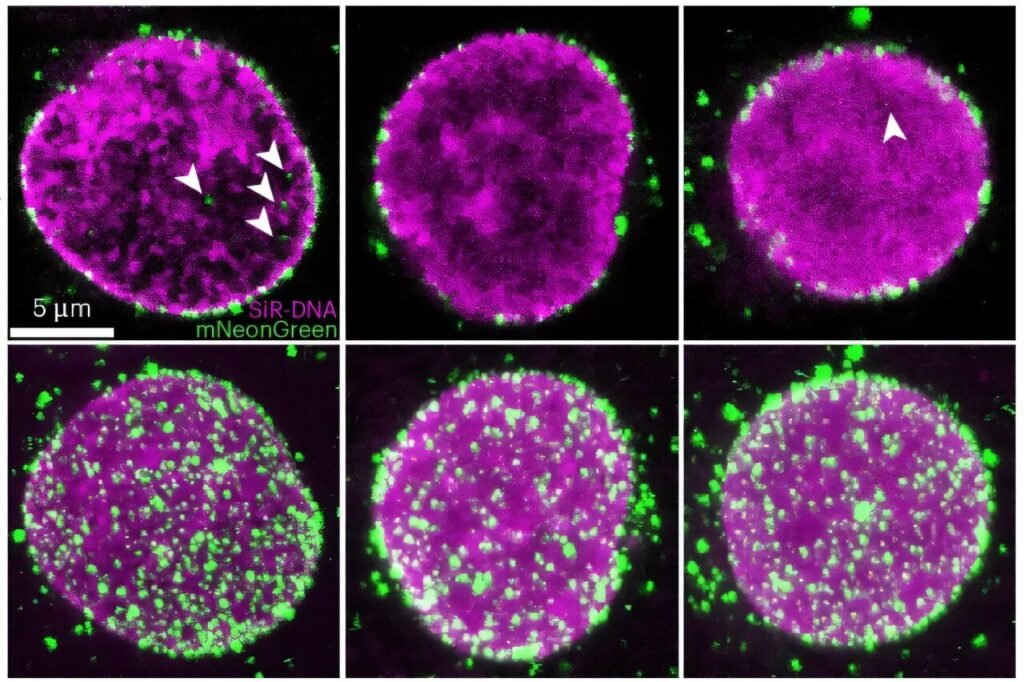In a groundbreaking study, researchers have uncovered the intricate process of how HIV-1 infiltrates the nucleus of human cells—a discovery that has the potential to revolutionize antiviral strategies. Led by Professor Peijun Zhang, eBIC director at Diamond Light Source, the study utilized state-of-the-art cryo-electron microscopy to capture HIV-1 viral cores in the act of nuclear import—a pivotal yet elusive stage in the virus’s life cycle.
Published in Nature Microbiology, the research harnessed the advanced cryo-EM facilities available at eBIC, the UK National Electron Bio-Imaging Centre. Scientists from Professor Zhang’s lab at the University of Oxford employed cell-permeabilization, a technique that renders the cell membrane permeable without causing damage. This method allowed them to simulate how HIV infects human cells and observe nearly 1,500 viral cores entering a cell’s nucleus.
The study shed light on the importance of the shape and flexibility of HIV-1 viral cores, the adaptability of the nuclear pore complex (NPC), and host factors such as CPSF6 in facilitating the virus’s entry into the nucleus. CPSF6, a host cell protein, plays a critical role in the early stages of HIV-1 infection, particularly in the virus’s integration into the host genome.
Contrary to previous beliefs, the study revealed that the nuclear pore is not a rigid structure but rather a dynamic gateway that can expand and change shape to accommodate the passage of viral cores. The interaction between the viral cores and CPSF6 determines whether the cores successfully enter the nucleus or remain outside, highlighting the active role of the nuclear pore in regulating viral entry.
HIV-1 has posed a significant health threat since its first reported case in 1981, causing millions of deaths and new infections annually. The findings from this study deepen our understanding of HIV-1 and underscore the power of in situ structural biology in elucidating complex cellular processes.
This research represents a significant advancement in visualizing HIV at a crucial stage and offers insights into potential strategies for combating the virus. By unraveling the mechanisms of HIV-1 nuclear import, scientists are paving the way for innovative antiviral interventions.
For more information, the study titled “HIV-1 nuclear import is selective and depends on both capsid elasticity and nuclear pore adaptability” can be accessed in Nature Microbiology (2025) with DOI: 10.1038/s41564-025-02054-z.
This research was conducted at Diamond Light Source, a leading synchrotron facility, further emphasizing the institution’s commitment to groundbreaking scientific discoveries.


